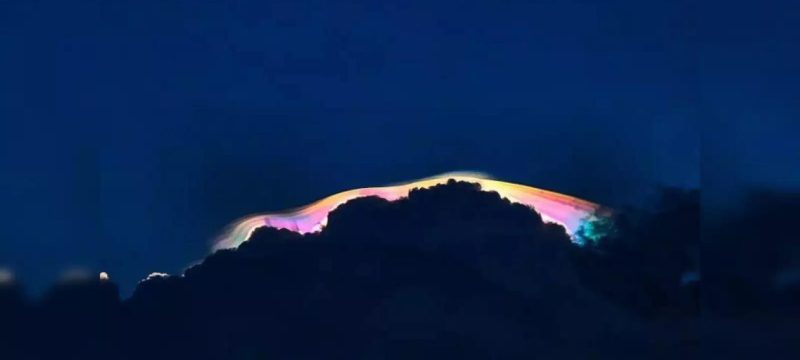Residents of Bengaluru, the electronic capital of India, have recently been captivated by the clear skies showcasing stunning hues of pink, green, and yellow. As these colors painted the sky, netizens flocked to social media to share their amazement and engage in discussions.
While many believed this beautiful display was simply another natural occurrence, it was actually a comet making its return to the solar system after an 80,000-year absence, according to astrophotographers. The vibrant skies were the result of Comet C/2023 A3 (Tsuchinshan–ATLAS), which was first observed on Monday, September 30.
Read more: Turkish Influencer Who Famously Married Herself Dies by Suicide at 26
The comet was discovered by the Purple Mountain Observatory in China on January 9, 2023. A month later, it was also independently detected by the Asteroid Terrestrial-impact Last Alert System (ATLAS) in South Africa, from which it gets its name.
Comet ran away as it was not local
One X user posted a photo of the stunning skies and inquired, “What is this phenomenon called? Bengaluru skies are just magical!” Another user, referencing a report from The Hindu, clarified that the pink hues were not due to an ordinary event but were caused by the Comet Tsuchinshan–ATLAS.
“A comet that came to Bangalore and left because it wasn’t local,” another user commented. Some users even likened the illuminated skies to the Northern Lights, the vibrant swirling curtains of light commonly known as the ‘aurora borealis.’
The Tsuchinshan–ATLAS is a non-periodic comet, meaning it doesn’t have a predictable appearance like more familiar comets such as Halley’s Comet. Its sighting over Bengaluru offered a rare and thrilling experience for astronomy enthusiasts.
A part of Sextan Constellation
As reported by the Deccan Chronicle, residents of Hyderabad can also view the comet until Wednesday, October 2.
“The comet is making its return to the Solar System after over 80,000 years. It is currently about 129.6 million kilometers away from Earth and is located in the Sextans constellation,” the Deccan Chronicle quoted astrophotographer Upendra Pinnelli.









